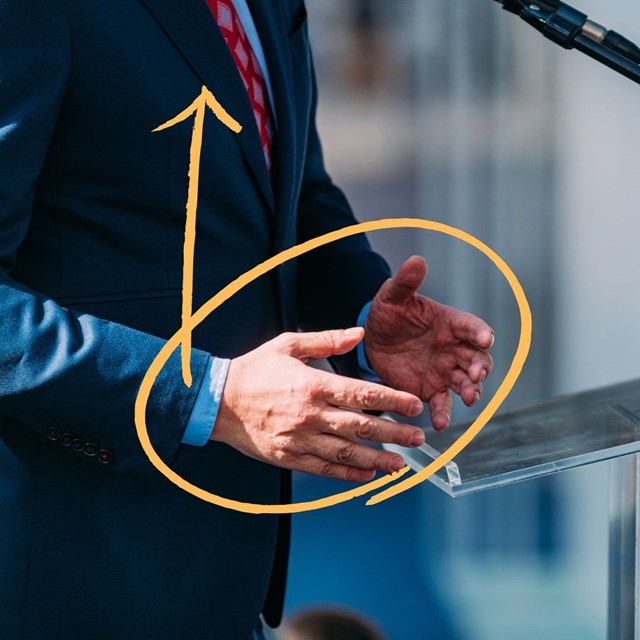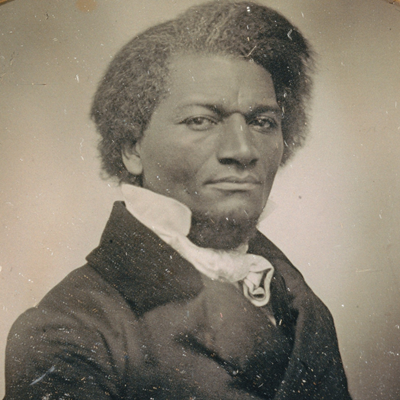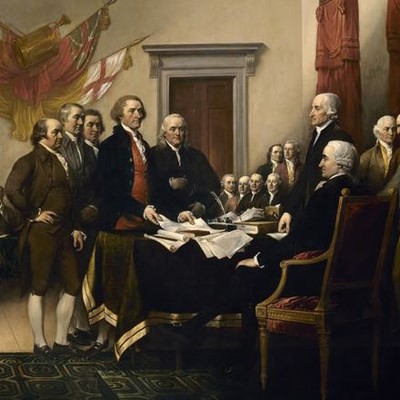
"Gestures will vary depending on personality type. The restrained temperament may employ few gestures. On the other hand, in a disciplined speaker, as in a disciplined actor, the extravagant gesture at a suitably climactic moment can have extraordinary effect."
– Reid Buckley in "Strictly Speaking"
Many speakers think of gestures as talking with their hands. So it makes sense that some of us gesture readily, almost loudly, while others of us may prefer to keep quiet with our hands.
At the school, we urge every speaker, even the quietest ones, to find ways to use gestures in presentations that illustrate their points AND feel like a good fit for them.
There's another important consideration with gestures. Just as we consider the tone of our voices to fit situations, gestures need to suit the occasion, too.
Here are some factors that should influence your thoughts on how you deliver gestures, no matter your platform style.
Size of the room/audience
When you're speaking to a small group in a small space, huge gestures may feel out of proportion to the room, just as a too-loud voice can be off-putting.
And as with vocal projection, on a large stage or in a bigger room room, generous gestures delivered with athletic engagement of the upper body are almost a necessity if you want your movements to have their full impact.
Seriousness of the message
Some gestures are more playful or theatrical than others. Choose yours to reflect your tone. Delivering bad news that a reduction in vacation hours is on the way, for example? Perhaps not a good time to use a chopping gesture, despite the fact that it illustrates precisely what's ahead.
In serious moments, consider keeping hands quiet. Subtle gestures, such as reaching out to the audience if you want to connect with them, might be useful. Suppose, for example, you might extend your arms forward with hands up turned as you say, "We'll work with you to get through this."
Preferences of the audience
Along with adding more gestures and animation for playful topics, you might consider using gestures when your goal is to entertain — and when you believe the audience would enjoy them.
As Reid Buckley notes in his book Strictly Speaking, young audiences respond to gestures, often the more exaggerated the better. For older audiences, he recommends dialing gestures down. "Older people prefer parsimony in gestures," he believes. "They don’t like to be lectured to, and too much hand flinging about in their faces irritates them."
While we're not sure about the generation gap there, we can imagine philosophy professors might appreciate fewer gestures than high school theater students — something to consider, at least.
The speaker's stage presence
This consideration encompasses more than the speaker's natural style — gregarious versus timid, for example. Your physicality is a factor in how you deliver gestures, particularly if you happen to have a tall or imposing stage presence.
Gestures that are close to the body and small may look especially stingy coming from a speaker with long arms or a booming voice. We suggest every speaker experiment with expanding the size of their gestures. It's a rare speaker whose arms are stretching too wide. Most of us err on the side of being too small, delivering restricted movements with elbows dug into our sides.
Learn more about using gestures
Here's our popular how-to guide for approaching gestures in a presentation.
If you're reluctant to use your hands during a speech, consider these three comfortable gestures to get yourself going.
Read more from our founder on the art of gestures—including why you can learn a lot from watching taxi drivers in Rome (in case you need another reason to visit Italy).






